Affiliate disclosure: This post may contain affiliate links. Please see our Privacy Policy.
Calendula oil is an easy-to-make, versatile and potent addition to any home medicine cabinet. It can be used topically for cuts and scrapes due to its anti-microbial and anti-inflammatory properties, but it’s also useful internally.
Calendula is a natural immune tonic, and works well in kitchen medicine too!
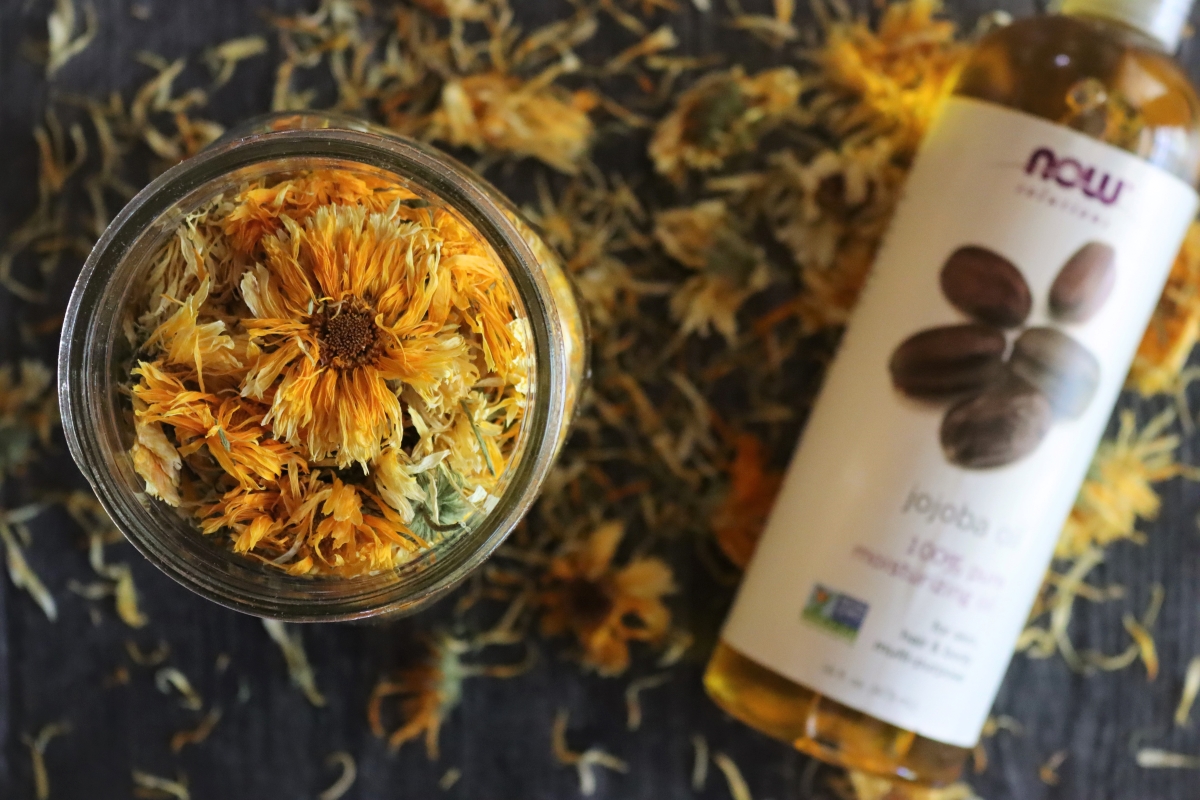
Calendula is an easy-to-grow annual that’s stunning in the garden. It’s an edible flower that’s commonly used in vegetable garden companion planting since it attracts pollinators and repels pests, but it also happens to be medicinal as well.
One of my favorite ways to use calendula is to make calendula oil, and it works well since calendula is usually used topically. Calendula oil is anti-microbial, anti-fungal and it also has anti-inflammatory properties.
Once you’ve made a simple herbal infused oil with calendula, you can use it as is, or incorporate it into all manner of lotions, creams, and healing salves.

Beyond their topical anti-microbial uses, the dried whole flower heads have been used as an immune tonic for centuries. According to the Chestnut School of Herbal Medicine:
“The whole flowers can also be dried and added to soups and stews as a winter immune tonic. This traditional folk use heralds from medieval Europe, where the flowers were likewise added to bread, syrups, and conserves. In the classic 1863 text The Complete Herbal, Nicholas Culpepper wrote,
‘The flowers, either green or dried, are much used in possets, broths, and drink, as a comforter of the heart and spirits, and to expel any malignant or pestilential quality which might annoy them.’”
Be sure to use edible oil (such as olive oil) if you intend to use calendula oil internally as an immune tonic. It works well in food-based medicine, for example, by using calendula infused-oil as part of a homemade salad dressing.
A few weeks ago I showed you all how to make dandelion oil, and making calendula oil is pretty much the same process. The end result is a bit different, as each infused oil has its own medicinal properties.
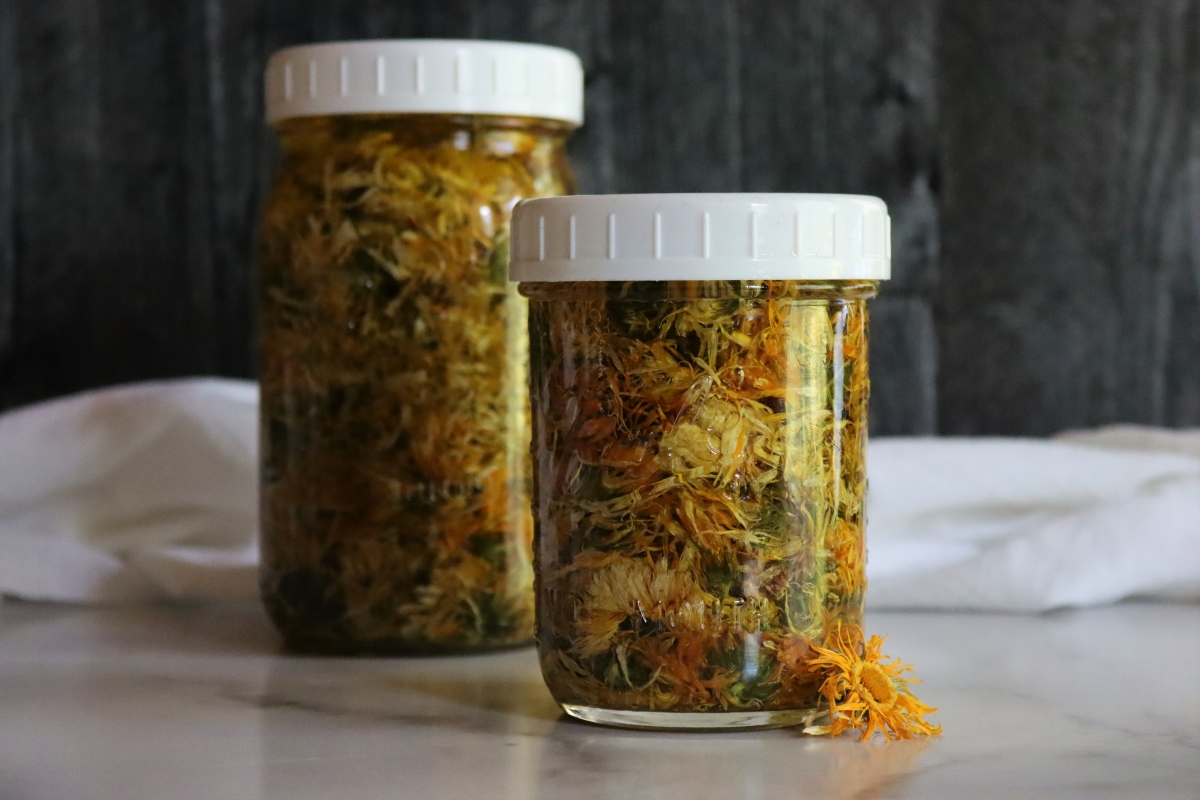
The Medicinal Properties of Calendula
Calendula officinialis is one of the most common medicinal herbs used by herbalists and natural healers. It’s safe to use internally and externally to treat issues with your skin, infections, and immune system.
You might be surprised by the different medicinal properties of calendula:
- Cellular repair and growth
- Natural antiseptic and antifungal properties
- Reduces inflammation
- Treats rashes and sunburns
- Works for eczema, acne, and cold sores
- Heals wounds, stings, burns, and scrapes
If you look at some of the most popular skincare products, you’ll find calendula listed in the ingredients. The reason for this is that calendula is a powerhouse medicinal herb for skin problems.
It works wonders on all skin types, and it’s so gentle that it’s safe to use on babies. It soothes cradle cap, diaper rashes, and other minor skin irritations in childhood.
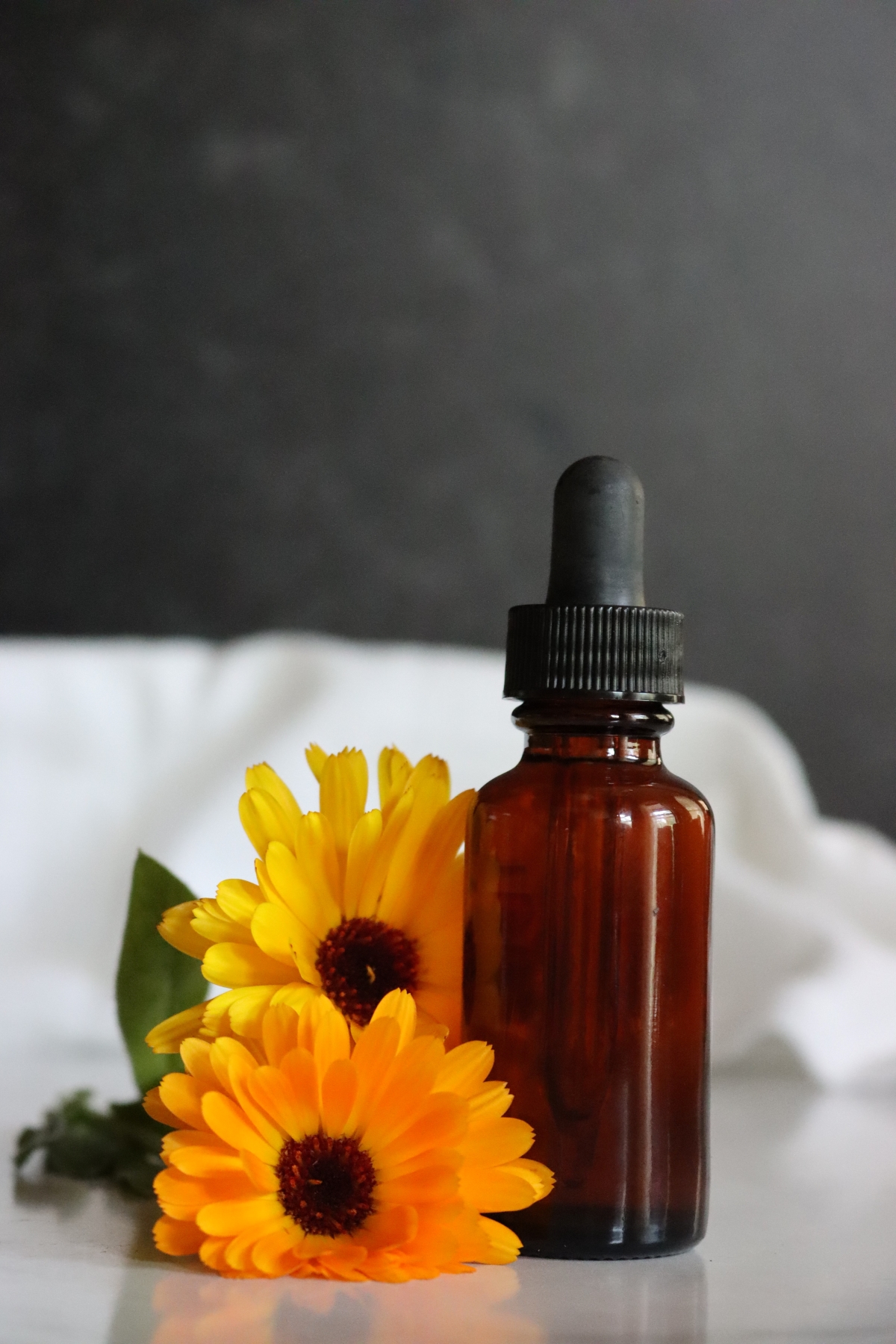
How to Harvest Calendula
Harvesting calendula happens all season, as soon as the first flowers appear in full bloom on the plant. Don’t try and wait, saving the flowers on the plant. The more flowers you harvest off the plant, the more flowers the plant produces. Frequent harvesting leads to more blooms.
You have to harvest the flower heads off the calendula plant or die back independently. When this happens, they go to seed, and you’ll end up with volunteer calendula plants all over your garden.
Aim to harvest in the morning before it gets too warm outside but before the dew dries. This is when calendula flowers are the freshest and at their peak. All you have to do is pinch the heads with your fingers or cut off the heads with scissors, leaving behind a long stem.
You can trim the stem back to the first set of leaves or not; that’s up to you.
The green sepals around the bright yellow and orange flowers also contain potent plant resins, so don’t worry about avoiding greenery (as you often do when harvesting dandelion blossoms).
How to Make Calendula Oil
To start, all you need is dried calendula flowers and your favorite oil. It takes patience, but once you have a jar or two of calendula oil, you’ll be dying to make more.
Calendula oil is an oil that is infused with dried calendula flowers. Making this infused oil requires steeping the flowers in a carrier oil, most often olive, coconut, or jojoba, oil.
Before you get started, make sure your calendula flowers are totally dried.
You may use whole dry flowers or just the petals, but they have to fully be dried to allow the natural active resins to be extracted into the oil. It is possible to use fresh flowers to make calendula oil, but it has an increased risk of bacterial growth; the possibility of the oil turning rancid is much higher.
If you’re purchasing dried calendula flowers, you only need a small amount to make calendula oil. It only takes about 20 grams of flower blossoms to fill a pint jar, or a bit less than an ounce. There’s no need to buy a whole pound unless you’re planning on making other calendula remedies.
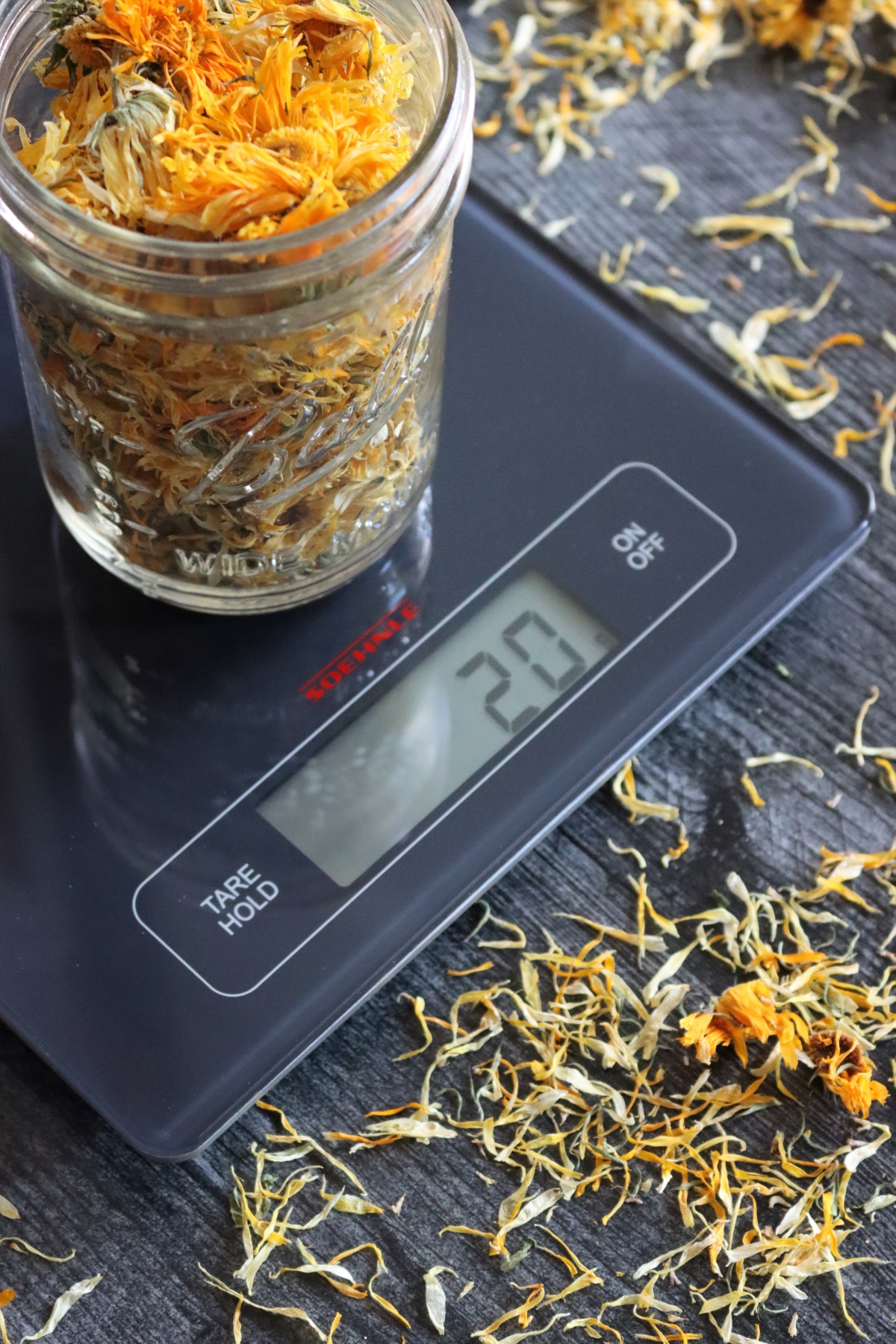
Dry Your Flowers (Or Buy Dried Flowers)
If you harvest calendula at home, spreading the flowers over a screen and leaving them to dry takes only a few days. Spread the flower heads on a sheet or newspaper as an alternative if you don’t have a screen. The flowers need to be turned every day and kept out of direct sunlight while drying.
If you have a dehydrator, you can spread out the flowers and dry them. It’s not safe to use an oven to dry calendula because the flowers cannot be exposed to high heat. It’s safest to dry at 90-95℉.
Pick Your Oil
Once you have dried flowers, the next step is picking the right carrier oil to make calendula oil.
I’m using Jojoba oil because I find it’s incredibly nourishing for the skin, and it absorbs fully without staining clothes or upholstery. It’s the only massage oil I used when I had my full-time therapeutic practice, and it’s still my favorite choice for skincare.
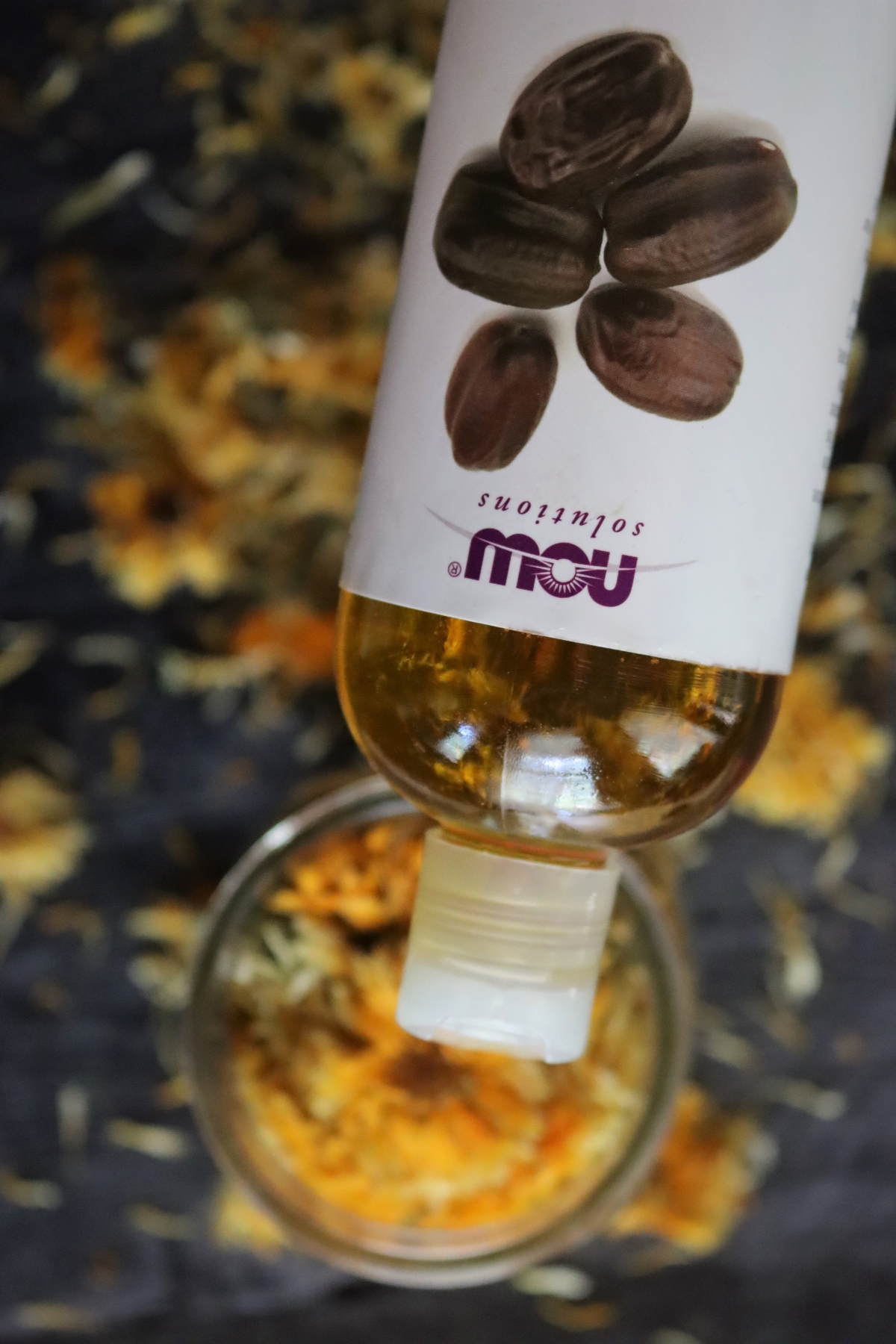
The downside of jojoba is that it’s only for topical use since it’s not a culinary oil. If you hope to use calendula oil internally, you’ll need to pick an edible oil such as olive oil or grapeseed.
Think about how you want to use the infused oil. If you plan to use it on your face, you want to be sure that it works for your skin type. Many oils are soothing and nourishing, perfect for those with dry skin.
Some of the best options include:
- Grapeseed Oil ~ Grapeseed oil is great because it’s naturally astringent and reduces acne, which means it’s unlikely to clog your pores. It’s non-greasy and absorbs quickly into your skin, but it’s not known for being super moisturizing (the downside of astringency). It’s a good neutral choice for both internal and external use, and it’s one of the most inexpensive options.
- Jojoba Oil ~ One of the best oils for your skin, jojoba actually mimics the skin’s natural oils so it’s highly nourishing. It’s shown to have anti-inflammatory properties, and it was my go-to oil in my massage practice because it’s less likely to stain sheets and clothing when you’re applying it as a massage oil. However, it’s not edible, so don’t use this on for internal uses.
- Sweet Almond Oil ~Another choice is sweet almond oil, and it’s excellent for dry and sensitive skin, reducing inflammation, scars, dryness, and eczema. This is edible oil, but obviously, avoid it (both internally and externally) if you have a nut allergy.
- Extra Virgin Olive Oil ~If your skin needs hydration, EVOO is the way to go. It’s ideal for dry skin, and since it’s edible, this is a versatile oil to use. In general, EVOO won’t clog your pores, but it might cause break-outs if you’re prone to acne.
- Coconut Oil ~Everyone praises coconut oil for beauty products, but it can be tricky in infusions since it’s solid at room temperature (unless you use fractionated coconut oil, which is liquid at room temp). Since it has antibacterial, antiviral, antifungal, and anti-inflammatory properties, coconut oil is great for salves and internal uses.
These are just a few of the carrier oil choices. You have to pick one that makes the most sense to you.
I also usually add a few drops of Vitamin E Oil, as it’s a natural preservative. It’ll help your calendula oil last longer on the shelf, and it has the added benefit of nourishing your skin.
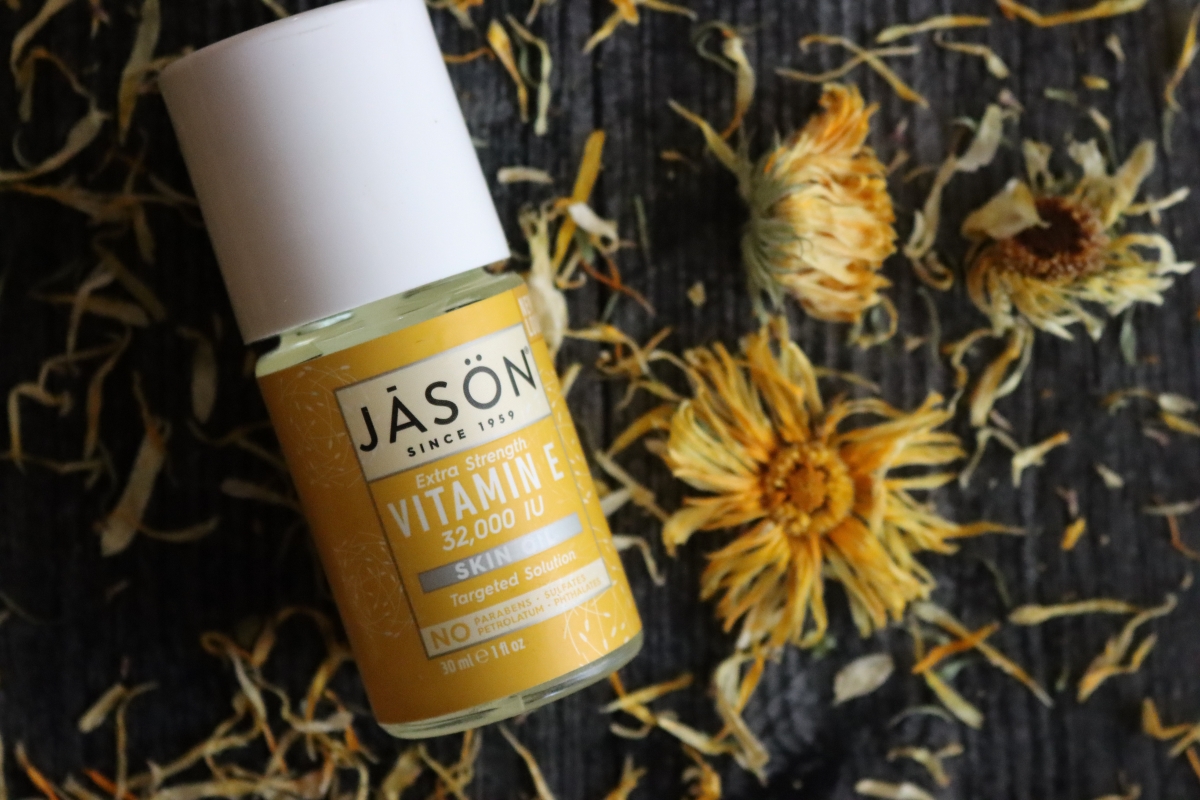
Fill a Clean Containers
Take your dried flowers and fill a clean glass jar with them. The jar should be at least ¾ full of dried calendula flowers; I typically use a mason jar. I usually use pint jars, but you could use a quart if you had enough dried calendula.
Fill The Jar with Oil
Then, pour your oil over the dried flowers until the jar is full or until the flowers are completely submerged. You might think the jar is packed with flowers, but wait until you see how much oil fits into the jar!
Store and Shake
Now, put a lid on the container and store it in a warm, sunny location. I keep mine on my kitchen windowsill because it receives tons of sunlight throughout the day. Make sure you gently shake it up every few days.
The oil and flowers need to infuse for a minimum of three weeks, but some people let them infuse for several months. The longer it infuses, the stronger the oil will be. I let my oil infuse for 4-6 weeks on average.
Strain Out the Flowers
Whenever you decide that it’s time for the infusion to end, use a cheesecloth and strain out the flowers from the oil. If you don’t have a cheesecloth, a coffee filter should work or a fine mesh strainer.
Calendula oil needs to be stored in a glass container, such as the jar that you used for the infusion or a glass bottle with a pump. You should keep it in a cool, dry location; a cabinet works perfectly.
To determine the shelf life of your calendula oil, take a look at the recommended shelf life of your carrier life. Some oils have a shorter shelf life than others, but the general storage time is one to two years. As I mentioned earlier, adding a few drops of Vitamin E Oil helps the oil keep naturally, since vitamin E oil is a natural preservative.
8 Ways to Use Calendula Oil
Now that you have a jar or two of finished calendula oil, you have to figure out ways to use it so that it doesn’t go to waste. I have a few suggestions that we regularly use that I think you’ll love.
A Facial Moisturizer
Calendula oil is great to moisturize your face but only use a few drops. You’ll end up looking like you bathed in oil if you add too much. All you have to do is spread the calendula oil evenly across your skin and gently massage it into your skin.
Body Moisturizer
You can apply this oil to other places besides your face. I use it as a body moisturizer. Massage it on your legs, arms, back, or wherever else your skin feels dry.
For this use, I’d strongly suggest using jojoba oil, as it’s the most nourishing in my experience, and absorbs the best without leaving you feeling greasy.
Healing Cuts, Scrapes, and Burns
One of the best ways to use calendula oil is to apply it to scrapes and cuts that need healing. I don’t suggest using this on major wounds, but calendula is renowned for its skin-healing abilities. Apply a thin layer over the cuts that need to be healed several times per day.
I keep a small dropper bottle of calendula oil on my kitchen shelf and I’ll apply it to those occasional tiny burns you get in the kitchen. After a few seconds, I forget all about them.
Though I cook constantly (and burn my hands occasionally as everyone does), I don’t have any burn scars on my hands thanks to the calendula oil.
Takes Care of Sunburns
Another way to use calendula oil is to treat sunburns (or any type of burn, as I mentioned above). It’s soothing and reduces swelling, a common side effect as your body tries to heal the burn.
Apply an even layer over your burn several times per day, and you’ll soon see a dramatic difference!
Use to Make Calendula Salve
Just like dandelion oil, you can use calendula oil to make a homemade calendula salve. When you make a homemade salve, you can use an infused oil to add desired medicinal properties.
Once you have calendula salve, you can use it on dry skin, chapped lips, cuts, scrapes, and other skin problems.
Use to Make Other Skincare Products
Calendula oil also is beneficial when making other skincare products like calendula lotion bars or calendula soap. Simply replace regular oil in the recipes with calendula oil in the same amount.
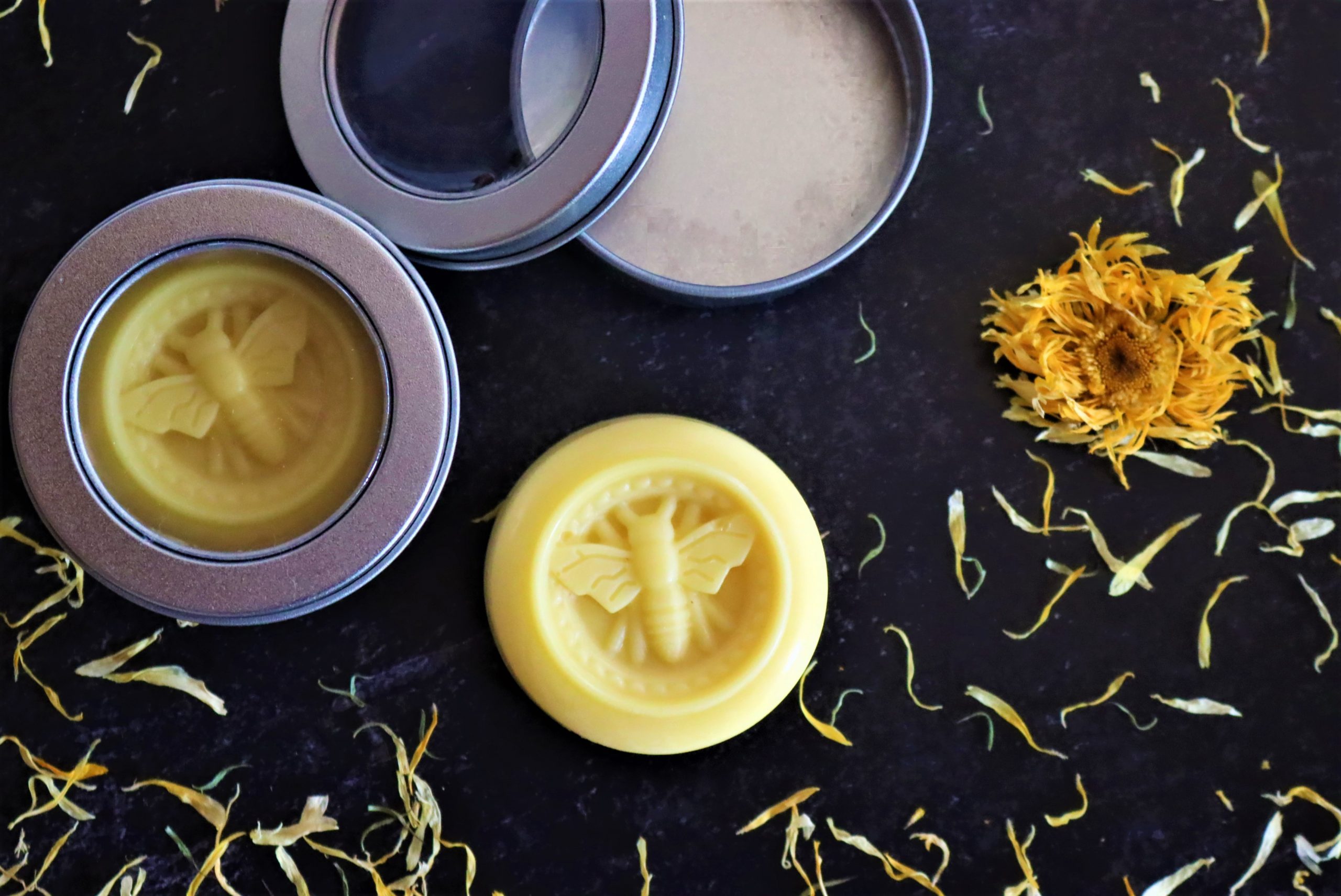
Calendula Scrub
Sugar or salt scrubs are incredibly effective at removing dead skin and natural exfoliation, and using calendula oil incorporates its natural skin care benefits at the same time.
Making a calendula scrub is pretty simple, and it makes for lovely gifts too.
Make a Salad Dressing
You can turn any infused oil into a salad dressing! It pairs well with citrus, so if you like to add mandarins or other citrus fruits to your salad, calendula dressing makes it pop. Its mild flavor is similar to saffron.
Of course, be sure to use an edible oil type such as grapeseed or olive oil, and avoid oils like jojoba which are not edible.
Herbal Self Care Tutorials
Want to make other homemade herbal body products?
Disclaimer on Homemade Herbal Remedies
I’ve been foraging wild medicines and treating my family with herbal remedies for the past 20 years, but I’m self-taught. Be aware that I am not a clinical herbalist, and this is based on my own research and personal experience using medicinal plants. I do not claim to have the experience that’d qualify me to advise you on your health, and I’m only providing this as a reference to encourage a broader interest in medicinal plants.
Please use this as a jumping-off point, but always do your own research and verify anything you read with multiple sources.
It’s always possible to have an adverse reaction to any medicinal herb, and plenty of people are allergic to even gentle herbs like chamomile. Always consult your doctor or a certified herbalist before trying any new medicinal plant. Often, they can have unintended reactions in combination with other herbs and supplements, and many herbs have side effects even when they are effective for their intended purpose.
If you are seriously interested in herbal medicine, I’d suggest investing in a course in herbal medicine, and I’d recommend any of the online courses put out by the Herbal Academy of New England. Specifically, the introduction to herbal medicine course and the family herbalist group of courses.
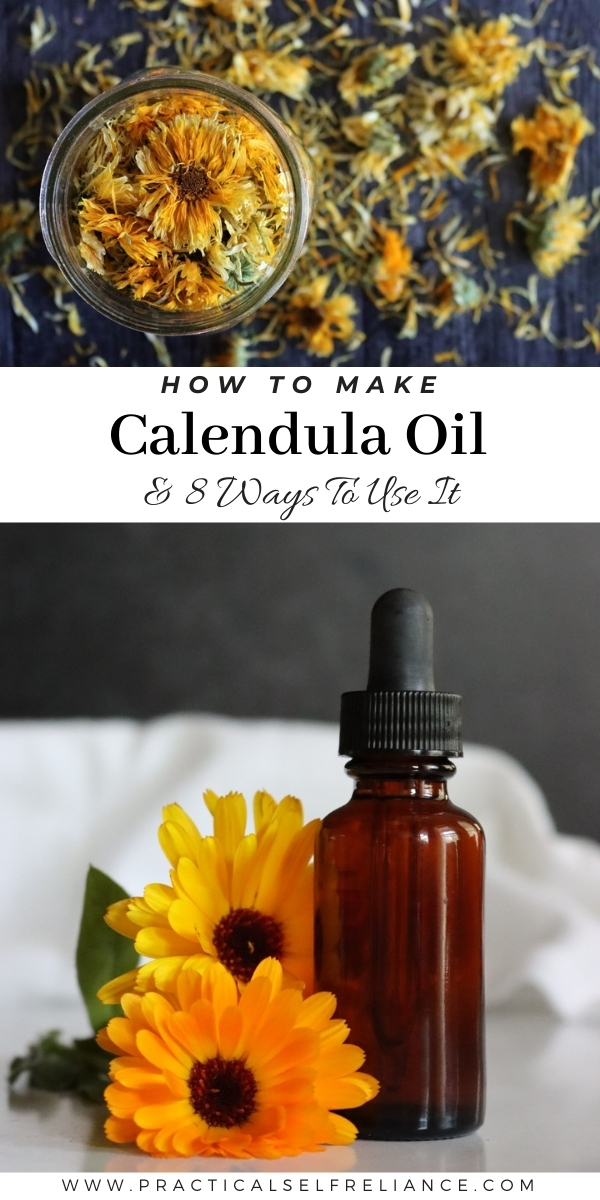
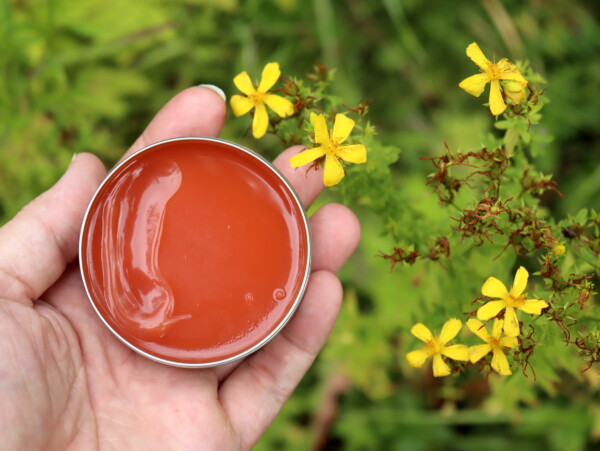
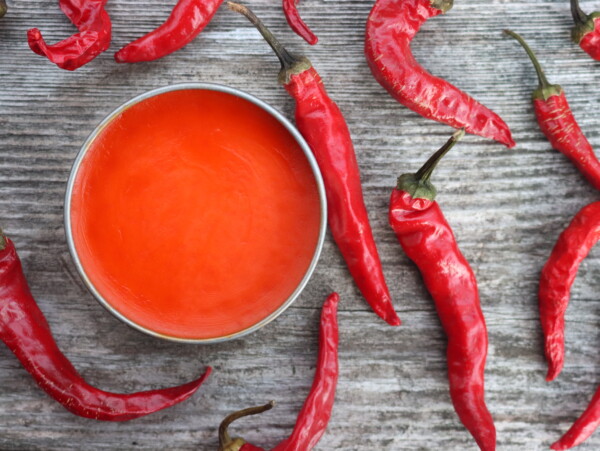
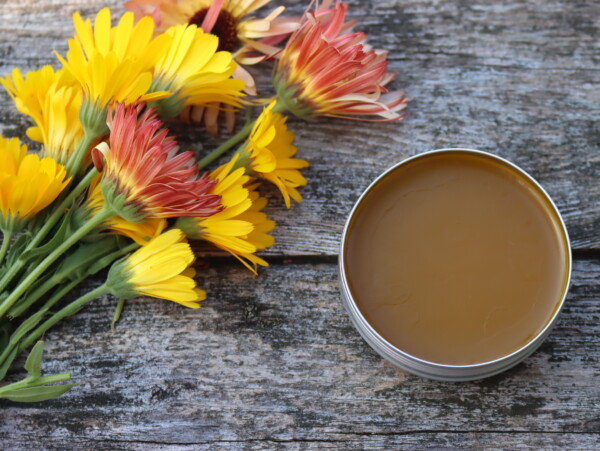
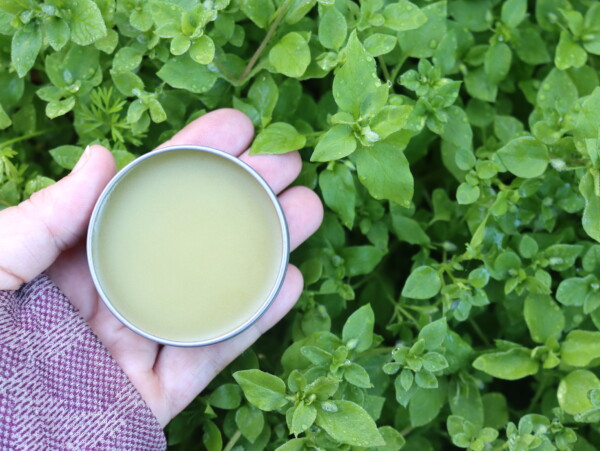
I am shopping for Jojoba oil and notice that there are clear (colour removed) and golden (natural) choices. Would you recommend one over the other and why?
thanks
Mary
ONtario, Canada
I personally like to use products as close to their natural state as possible. Either one would probably look fine but I would personally use the natural or golden oil since it’s more natural.
Thank you for your informative write up on Calendula Oil! I want to make the Calendula Oil infusion – curious about using olive oil as I thought olive oil was supposed to be kept in dark places, but you are saying to put it in a sunny window?
The heat from the sun helps to speed up the infusion. You don’t want to store it long term in a sunny place but it’s ok for a short period of time while you’re doing the infusion.
Thank you for your informative write up on Calendula Oil. I just started a Calendula Oil infusion using Organic Olive Oil. I placed the dried flowers in a quart mason jar and covered it with the EVOO. The jar is half full. I also added 7 drops of organic vitamin E oil to the infusion. My intent is to use it externally. Can it be used internally since I’ve added the Vitamin E oil?
As long as the vitamin E oil is intended for consumption then yes you can still use it internally.
I am infusing dried calendula in olive oil to make my soaps. What can I do with the oil soaked flowers after I’ve strained them? Hate to throw them out!
Calendula flowers are sometimes used in soups and stews so I imagine you could probably add them into something like that as long as you use an oil that is edible.
I love to use it on hair too as It has an anti-dandruff effect and moisturizes the scalp.
I really love the scent of the Calendulas. Making oil and salve both. I didn’t know it was good for burns, so that’s good. Great article
Yes, calendula is great for so many things.
Hi, I am planning to make calendula oil, my flowers are currently drying. I am purchasing jojoba oil. The site I am looking at sells in quantities of 16 oz or 64 oz. About how much oil do you need when using a pint jar?
Thank you.
One pint is 16 oz. so 16 oz would be more than enough oil if you only plan to do one jar.
Absolutely brilliant honest and thorough write up about making calendula oil thankyou!
I found this looking to remind myself of making calendula oil as I have beautiful calendula flowers this year Yet, have learnt so much more than this reading your article and inspired me to make more of such things.
You’re very welcome. So glad you enjoyed the post.